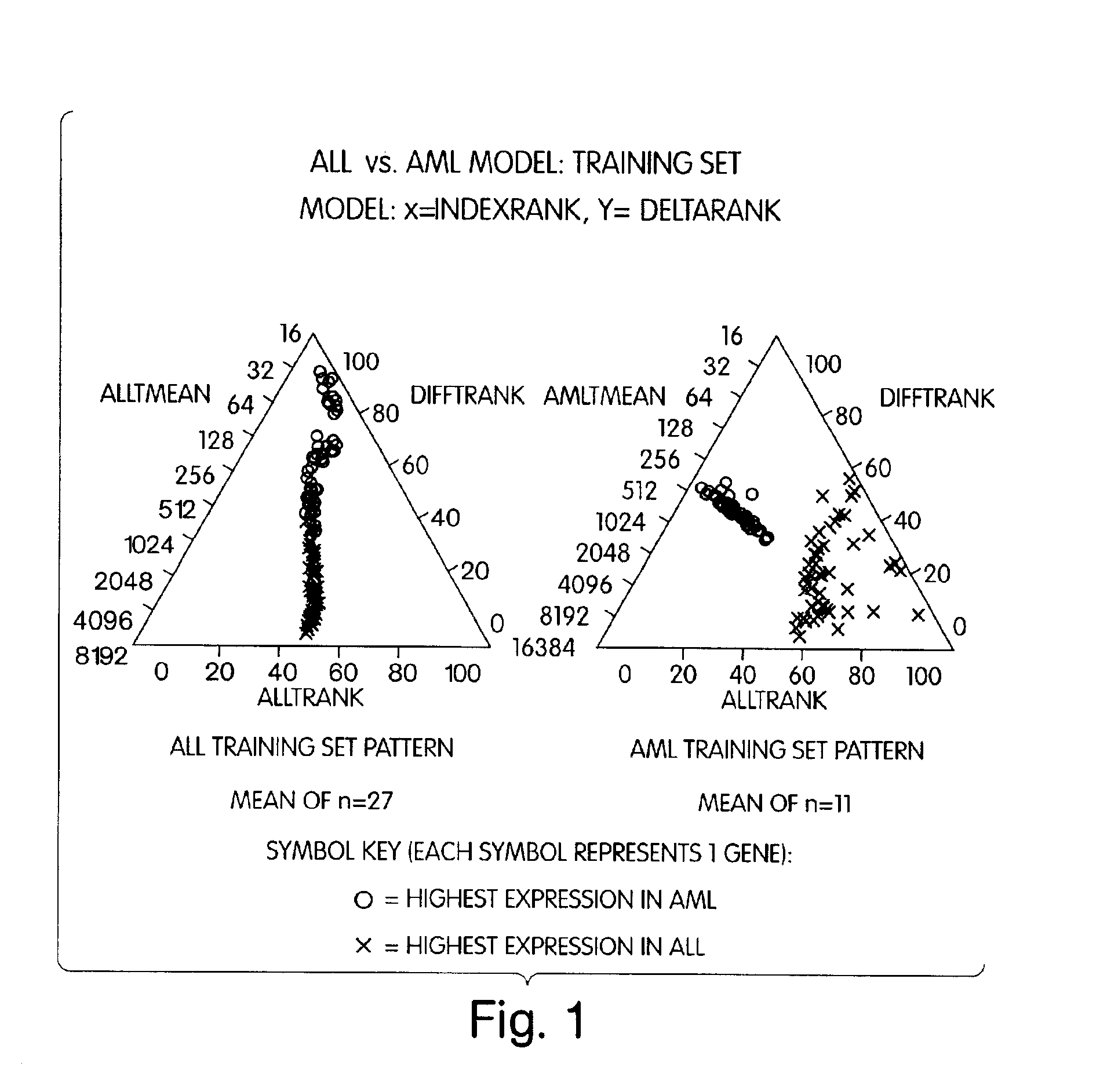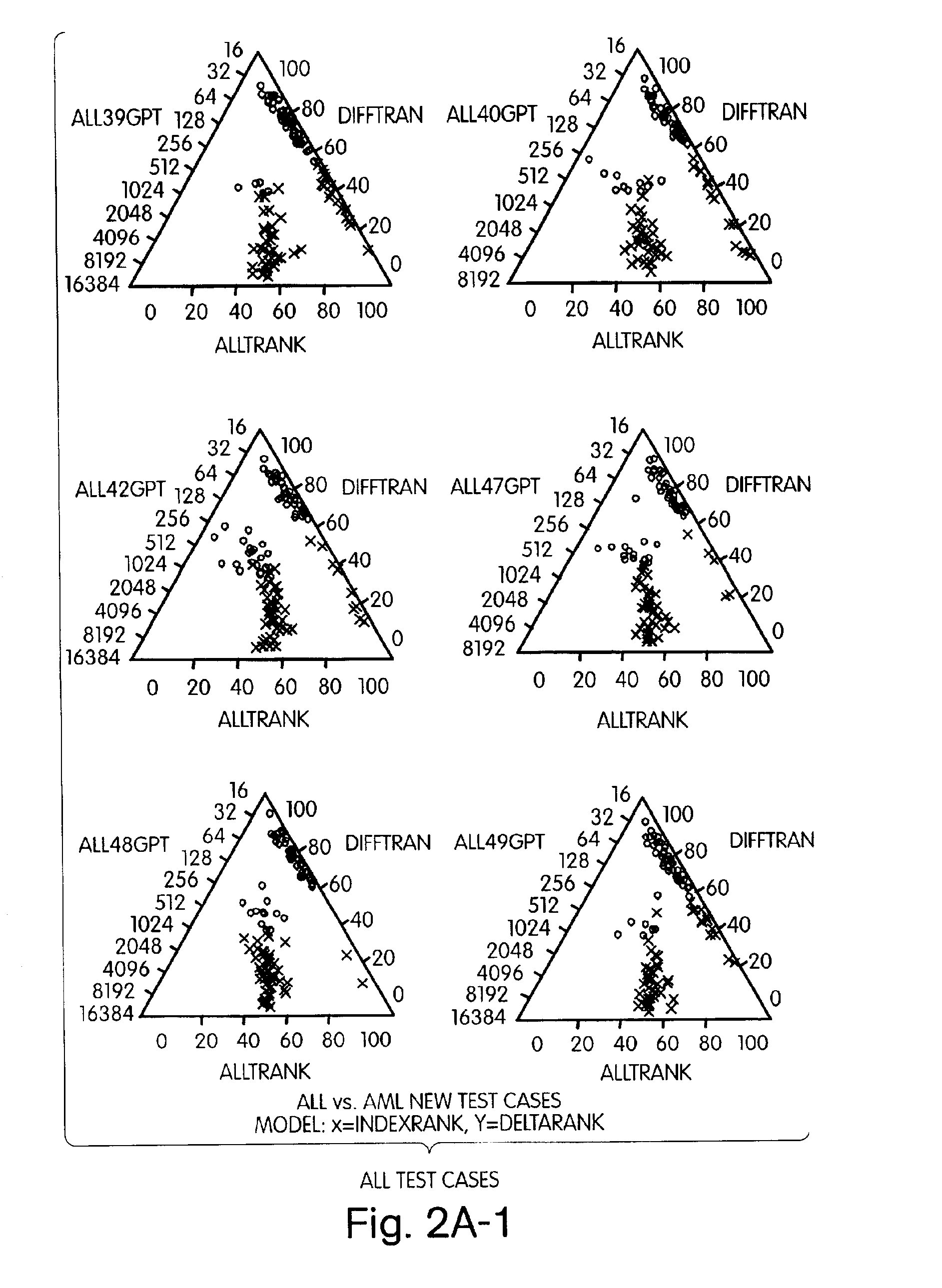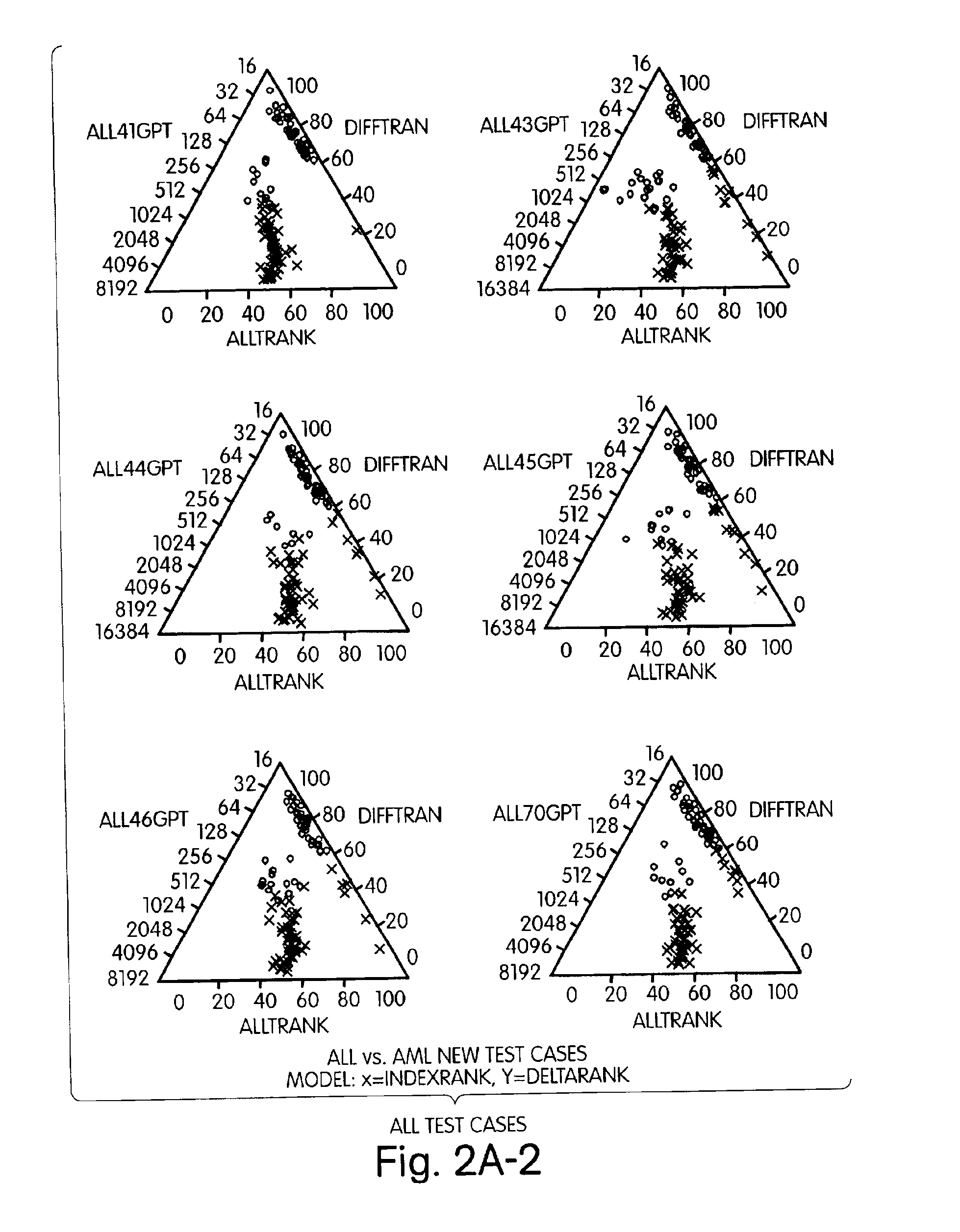Method and display for multivariate classification
a multi-variate, classification technology, applied in the field of tissues classification methods, can solve the problems of insatiable statistics and data display methods for this application, prior art approaches lack methods for analyzing large quantities of multi-variate data, and methodologies suffer from a requirement for sophisticated analysis and interpretation by the end user, etc., to achieve the effect of rapid classification of “objects
- Summary
- Abstract
- Description
- Claims
- Application Information
AI Technical Summary
Benefits of technology
Problems solved by technology
Method used
Image
Examples
examples
As a proof of concept, gene expression in tissues of Acute Lymphocytic Leukemia (ALL) and Acute Myelogenous Leukemia (AML) were classified. The gene expression data show that the two tumor types have systematic differences in gene expression. The data published by Golub et al. (Science 286:531-537, 1999) were used; expression of 5000+ genes was analyzed from 27 (ALL) and 11 (AML) training tissues.
The 100 genes which best distinguish the two groups were selected by standard statistical approaches (FIG. 7). First, the mean expression values of the two groups were compared, and only those with a minimum-3-fold and 100-unit difference between means were retained. The logged means were then rank ordered by t-test and the top 50 genes which were upregulated in AML, and the top 50 upregulated in ALL were selected for modeling. This represented 100 genes, or variables, which distinguish the two groups of AML and ALL. The objective was to develop a model of how these variables can distinguis...
PUM
 Login to View More
Login to View More Abstract
Description
Claims
Application Information
 Login to View More
Login to View More - R&D
- Intellectual Property
- Life Sciences
- Materials
- Tech Scout
- Unparalleled Data Quality
- Higher Quality Content
- 60% Fewer Hallucinations
Browse by: Latest US Patents, China's latest patents, Technical Efficacy Thesaurus, Application Domain, Technology Topic, Popular Technical Reports.
© 2025 PatSnap. All rights reserved.Legal|Privacy policy|Modern Slavery Act Transparency Statement|Sitemap|About US| Contact US: help@patsnap.com



